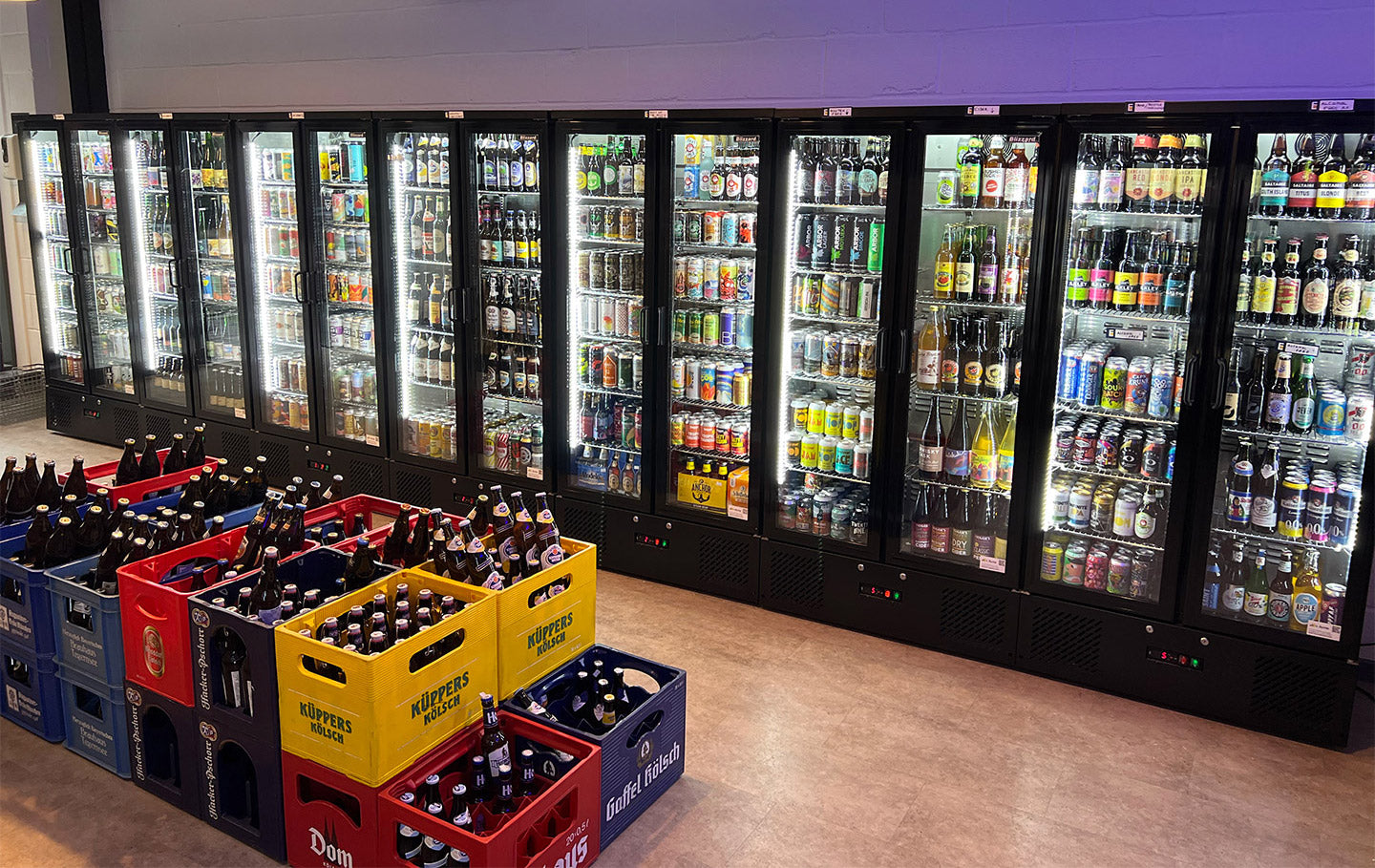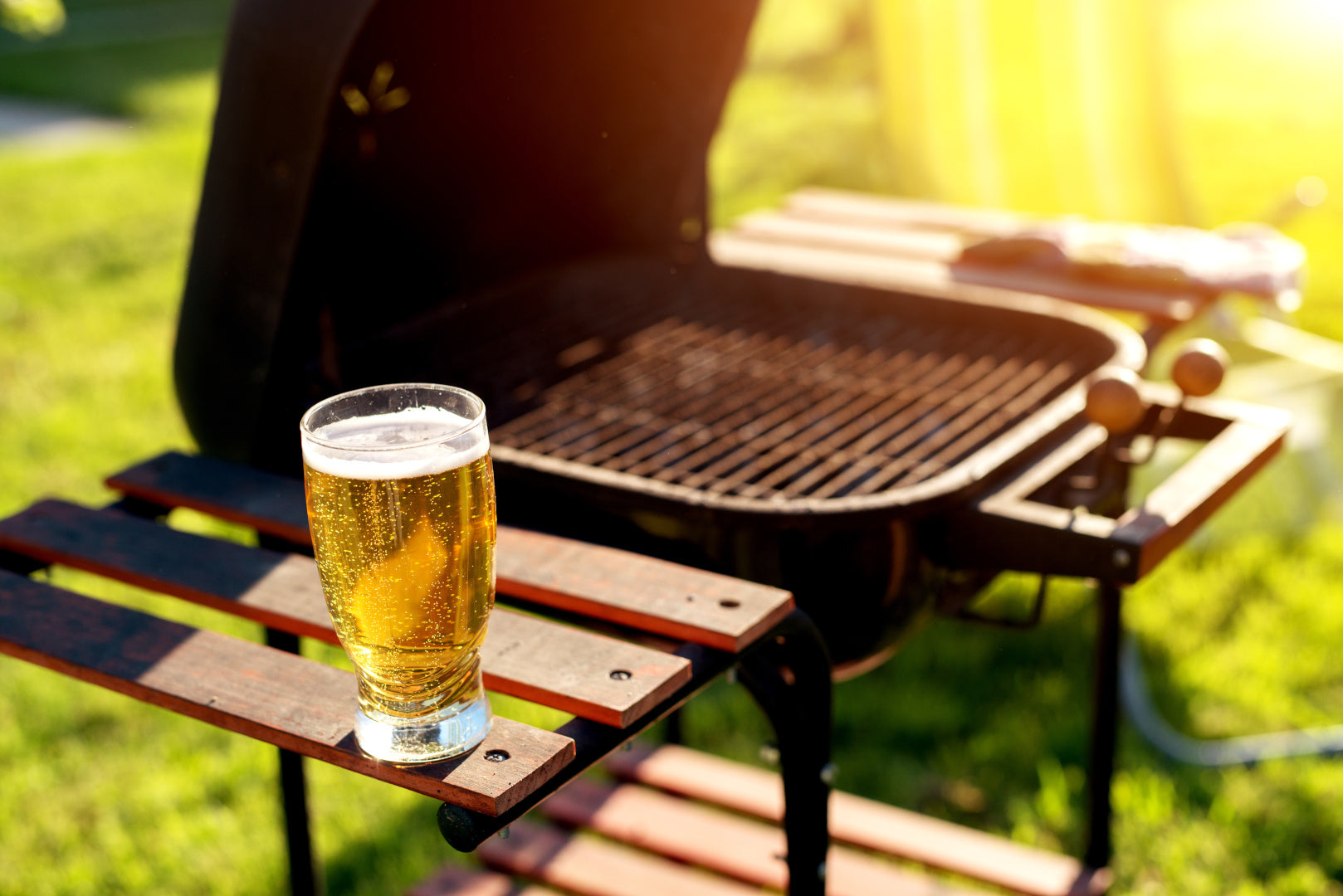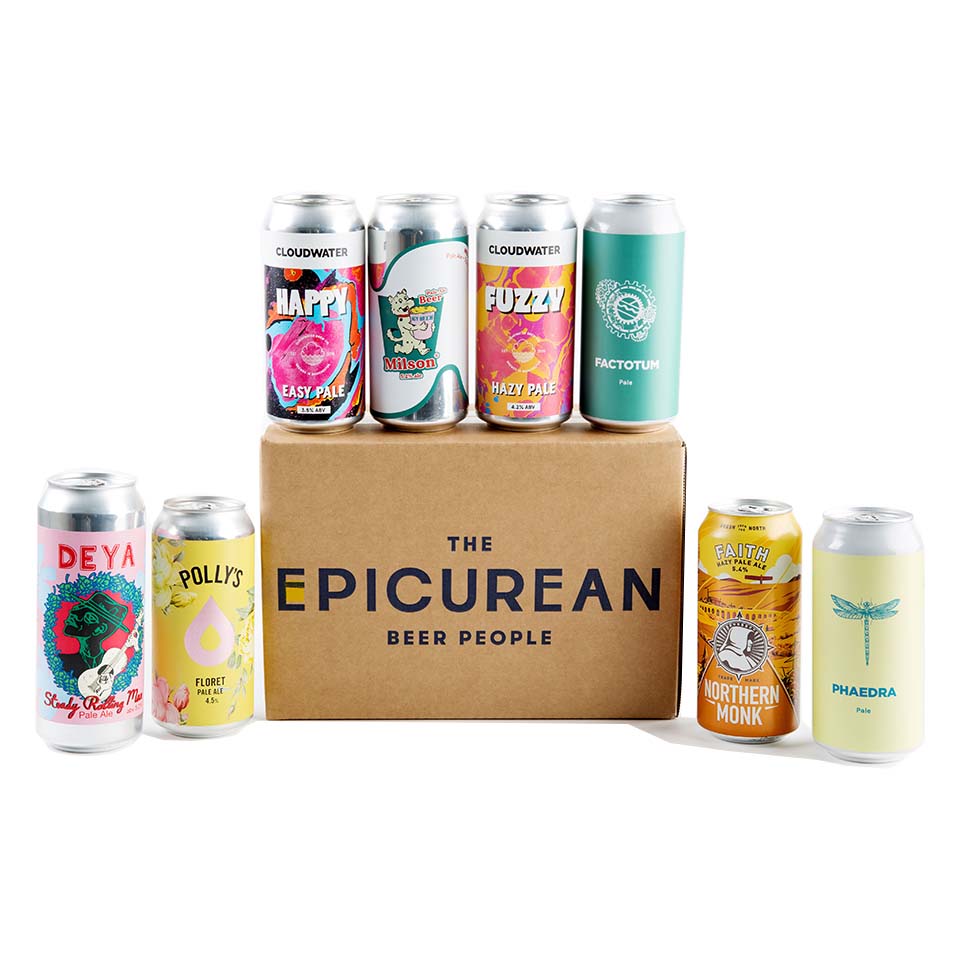
Are American IPAs still “10 Years Ahead” of Their British Counterparts? By Matt Curtis
November 15, 2022
This is the second blog entry in our mini-series written by award winning beer writer Matt Curtis.

Author: Matt Curtis.

Are American IPAs still “10 Years Ahead” of Their British Counterparts?
My first taste of American IPA was on US soil. It was a mind-altering, world-shifting experience—like tasting beer in high definition for the very first time. Bold, fresh flavours melding citrus fruit with honeysweet biscuit, which somehow remained in perfect balance, all leading towards a riotously bitter finish.
Before this experience I did already consider myself to be something of a beer lover, and was a cask ale drinker, but that first sip of American IPA transformed me into an out-and-out beer enthusiast. In the decade or so since, I’ve settled back into loving beers both on the subtle and extreme ends of the flavour spectrum. However, in the immediate aftermath of that moment all I could think about was where my next hit of hoppy, bitter IPA was coming from.
Thankfully, in 2010, when this happened, British breweries were not only beginning to experiment with modern, North American hop varieties for the first time, but it felt like a new brewery was opening every week. Craft beer was exploding in the US, in fact it had been for several years, and now it was beginning to inspire a new wave of British breweries looking to do things a little differently than many of those that came before.
Some early interpretations of American IPAs by British breweries—beers such at Jaipur from Derbyshire’s Thornbridge, or Dobber, from Marble in Manchester—proved that we certainly had the chops to make these styles on our side of the pond. But these weren’t mere cover versions. Instead they were Anglicised takes on the American idea of what IPA should taste like. Beers that worked as well on cask as they did on keg.
But a lot of early attempts by British breweries to replicate these exciting and vibrant tasting beers fell way short of the mark. Granted, the supply of quality, fresh US hops 10 years ago was a long way from where it is now, but it took a while for a lot of new British breweries to really get their heads around the style and dial in their recipes.
As a result of this, at the time it was often said that “British brewing is 10 years behind the industry in the US.” This statement wasn’t entirely true, because here in the UK we have a rich, wonderful brewing tradition, and have been producing beers par excellence for a very long time indeed. The nail it did hit on the head was that, in the early days of modern (or craft, if you will) beer, our takes on American beers certainly weren’t as good as the real thing.
It was easy enough to compare them too, as over the past decade a great number of American breweries have furnished us with imports. Not too long ago it was easy enough to pick up beers from the likes of Dogfish Head, Oskar Blues, Stone, Left Hand, Odell and Firestone Walker without much of a second thought.
But if you look at bottle shop shelves today, only a handful of these illustrious brands remain, instead replaced by beers from their now far more established British counterparts. Has the sparkle disappeared from these once sought after American brews? Or did we simply catch up…
I decided to do some research on my most recent visit to the US, and put this theory to the test. I’ve continued to visit the US state of Colorado regularly ever since that first taste of American IPA. Cities such as Denver, Boulder and Fort Collins are veritable beer paradises, with plenty of brewery taprooms and specialist beer bars that have a staggering amount of choice (although, by today’s standards, it's not all dissimilar to the selection you’ll find in cities like Manchester, or Leeds.)
Case in point, the first bar I stopped into for a spot of lunch was pouring Blind Pig, an easy drinking, 6%-ish West Coast IPA from California’s illustrious Russian River Brewing Company. It wasn’t long after that I was once again drinking the very beer that gave me that first experience of American hops—the eponymously named Odell IPA.
In a departure from that first experience, what struck me about both of these beers was not how intensely flavoured they were, or how deeply bitter they were, but quite the opposite. They both tasted how I remembered, but somehow felt mellower, and more easy going, as if the ultimate goal was not how much hop or malt character they could pack into every glass, but to convince you that, yes, you need to order another when you’ve finished this one.
This theme continued as I worked my way through classics from all ends of the country. The fact that Denver’s annual Great American Beer Festival was that same week meant that bars were hosting more breweries than usual. I was able to try fresh beers from New England like The Alchemist’s Heady Topper, Maine Beer Co. Dinner, and Lawson’s Sip of Sunshine. At the same time I was able to enjoy West Coasters from Cellarmaker Brewing Company, Alpine Nelson—even the illustrious Pliny the Elder.
And still, the defining character of all of these beers was balance and drinkability, with the intensity I once remember now feeling like an afterthought.
“Maybe I’ve changed,” I thought. A decade of drinking hoppy beer will certainly alter one's palate. But also there was a realisation that convincing the customer to order that second or third pint has been the goal all along—something that good breweries recognise regardless of which side of the Atlantic they are situated.
Getting back to the UK and comparing my experience of American IPAs to the versions of the style brewed at home was a revelation. The quality gap between those at the top of their game and American beers that could ostensibly be referred to as “classics of the genre” is now almost non-existent. I barely had to step out of my front door and into local breweries such as Track, Cloudwater and Runaway to taste beers that could have been brewed in Portland or San Diego, but were in fact made in Ardwick.
While it’s still possible to pick up beers that could be described as “flavour bombs”, established breweries know that its balanced and dependable beers that the majority of drinkers are looking for. It’s also important to recognise that UK brewed American style IPAs are always going to carry with them a little locality, whether it's the mineral snap of the water profile in North Yorkshire, or the satisfying, biscuity sweetness of British barley. This is important, as if all we were doing was brewing clones of what we taste in other countries, well, beer would be a very boring place indeed.
Not convinced that British-brewed IPAs are as good as their American counterparts? Here’s a few recent favourites of mine that should help change your mind.
Cumbria’s Fell Brewery has been quietly making some of the best beers in the country since it was founded in 2013. They only popped on my radar recently, after visiting its fantastic bars in both Kendal and Chorlton. Tinderbox is its interpretation of a classic West Coast IPA; all malty-sweet and packed with resinous, citrus-tinged hops. There should be more fuss around Fell, and this is the perfect place to begin exploring its range.
Sureshot Here’s What You Could Have Won DDH IPA
With the brewing pedigree of its founder, James Campbell—who counts the likes of Marble and Cloudwater on his CV—Sureshot was always going to be an exciting prospect for the Manchester brewing scene. It quickly established itself as an expert purveyor of hoppy treats, and this IPA, in all its hazy, juicy, tropical fruit glory, is the perfect example of this.
Full Circle x Dig Brew Hybrid Moment Cold IPA
What the hell is a Cold IPA? An idea hatched by Kevin Davey, head brewer at Portland, Oregon’s Wayfinder beer, it takes the idea of a traditional, West Coast IPA, and then mixes it up by using a small percentage of either rice or corn (maize to us Brits) alongside barley, before being fermented with a lager yeast, but at ale temperatures. The result is a beer with all the resinous hop character of a good Westie, but with the crispness, and drinkability of a lager. Believe the hype, Cold IPA is a style that’s definitely worth getting excited about.





